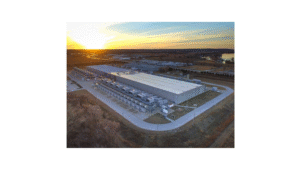Despite a slowdown in overall inflation, U.S. families are seeing rapid increases in electricity bills.
The May 2025 consumer price index shows that electricity costs increased 4.5% over the previous year, which is over twice the rate of inflation for all products and services.
In May, the U.S. Energy Information Administration predicted that through 2026, retail electricity prices would surpass inflation. It stated that since 2022, prices have already increased more quickly than the general rate of inflation.
“It’s a pretty simple story: It’s a story of supply and demand,” stated David Hill, the former general counsel at the U.S. Energy Department and executive vice president of energy at the Bipartisan Policy Centre.
According to energy experts and economists, there are numerous contributing elements.
According to Hill, the rate at which new electricity generation is being added to the electric grid is generally being outpaced by the increase in the demand for electricity and the deactivation of power-generating facilities.
Regional prices apply
The EIA utilised federal data from the Bureau of Labour Statistics to estimate that in 2023, U.S. consumers spent an average of approximately $1,760 on electricity.
Naturally, prices might differ significantly depending on the location and amount of electricity used by customers. According to EIA data, the average household in the United States paid approximately 17 cents per kWh for energy in March 2025. However, the price ranged from a low of approximately 11 cents per kWh in North Dakota to approximately 41 cents per kWh in Hawaii.
Electric rates would increase more quickly for households in some regions than for those in others, according to experts.
According to the EIA, residential electricity costs in the Pacific, Middle Atlantic, and New England regions—where customers currently pay significantly more per kilowatt-hour for electricity—may rise more than the national average.
“Unlike oil prices, which are set globally, electricity prices are set regionally,” stated Joe Seydl, a senior markets economist at J.P. Morgan Private Bank.
According to the EIA, average retail power prices will rise by 13% between 2022 and 2025.
According to a CNBC study of federal data, this indicates that the average household’s yearly electricity cost might increase by roughly $219 in 2025 compared to 2022, to roughly $1,902 from $1,683. That is predicated on their continued use.
However, according to EIA estimates, costs for families in the Pacific area will increase by 26% during that time, to more than 21 cents per kilowatt-hour. During that time, prices will rise by 8% for residents in the West North Central region, reaching about 11 cents per kWh.
But according to experts, some electrical developments are occurring nationally as well as regionally.
The ‘energy hungry’ data centres
On October 17, 2024, the QTS data centre complex was being built in Fayetteville, Georgia.
Jennifer Curran, senior vice president of planning and operations at Midcontinent Independent System Operator, testified at a House energy committee in March, stating that improvements in energy efficiency have made the growth in electricity consumption “minimal” in recent decades. (MISO, a regional operator of the electric grid, provides service to 45 million people in 15 states.)

According to Curran, “electrification” in the United States increased as a result of the usage of electronic gadgets, smart household appliances, and electric cars.
According to experts, data centres will play a significant role in the demand that is expected to increase in the upcoming years.
Cloud computing, artificial intelligence, and other tech applications are powered by data centres, which are enormous warehouses of computer servers and other IT equipment.
The U.S. Energy Department reports that throughout the decade to 2023, data centre electricity consumption tripled to 176 Terawatt-hours. According to the organisation, use is expected to quadruple or triple by 2028.
According to the Energy Department, data centres will use up to 12% of all electricity in the United States by 2028, up from 4.4% in 2023.
“Energy hungry,” Curran described them. According to her, support for artificial intelligence has played a major role in the “unexpected” surge in demand.
According to the International Energy Agency, data processing in the U.S. economy is expected to use more electricity in 2030 than the production of all energy-intensive items combined, such as chemicals, steel, aluminium, and cement.
Experts predicted that as homes and companies continue to electrify, the demand for electricity will also increase.
To cut down on greenhouse gas emissions that warm the earth, the United States has shifted away from fossil fuels including coal, oil, and natural gas.
For instance, more houses might switch to electric heat pumps instead of gas furnaces or electric automobiles instead of gasoline-powered vehicles, both of which are more efficient technologies but increase the total demand on the electric grid, according to experts.
According to BPC’s Hill, other factors include population increase and cryptocurrency mining, another activity that uses a lot of power.
“It’s all about infrastructure.”
Thianchai Sitthikongsak | Moment | Getty Images
According to Seydl of J.P. Morgan, the United States is experiencing issues with power transmission and distribution as the demand for electricity rises.
“All about infrastructure at this point,” he remarked, in reference to rising electricity costs. “The grid is aged.”
For instance, Michael Cembalest, chairman of market and investment strategy at J.P. Morgan Asset & Wealth Management, stated in a March energy study that transmission line growth is “stuck in a rut” and “way below” Energy Department forecasts for 2030 and 2035.
Another challenge is the lack of transformer equipment, which steps voltages up and down throughout the U.S. grid, according to Cembalest. He said that delivery timeframes had increased from roughly four to six weeks in 2019 to roughly two to three years now.
“Half of all US transformers are near the end of their useful lives and will need replacing, along with replacements in areas affected by hurricanes, floods and wildfires,” Cembalest stated.
Since 2018, the second-highest inflation rate among all wholesale items in the United States has been suffered by transformers and other gearbox equipment, he stated.
According to BPC’s Hill, some facilities, such as outdated fossil fuel-powered plants, have been decommissioned, and the installation of new energy capacity to replace them has been rather gradual. He added that the cost of building facilities has increased due to inflation in labour and equipment expenses.
Also read : GTA 6 news






